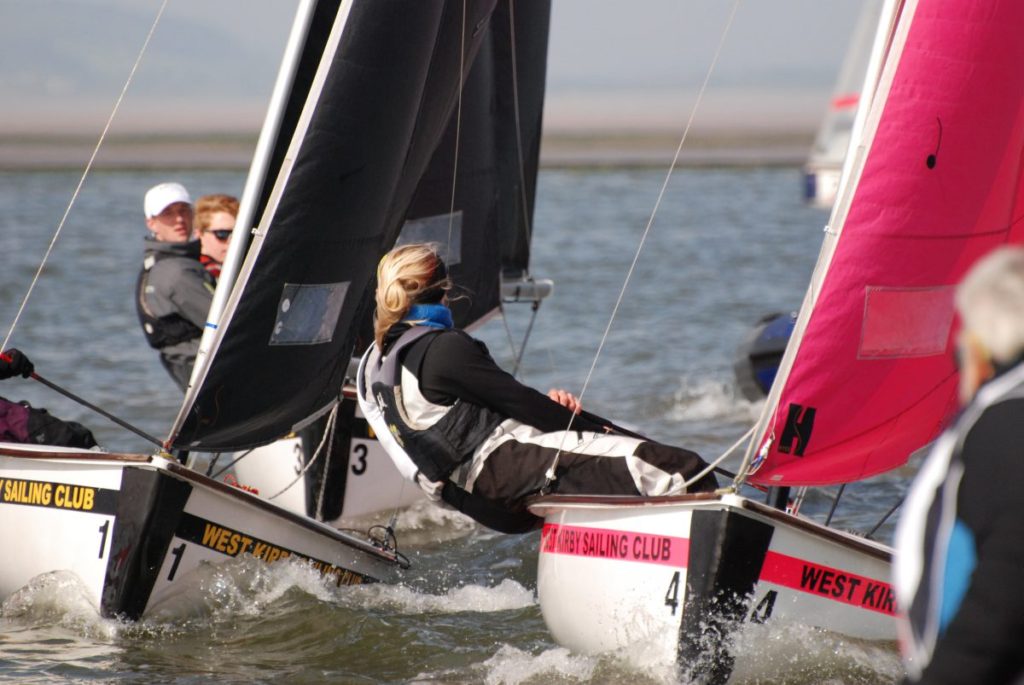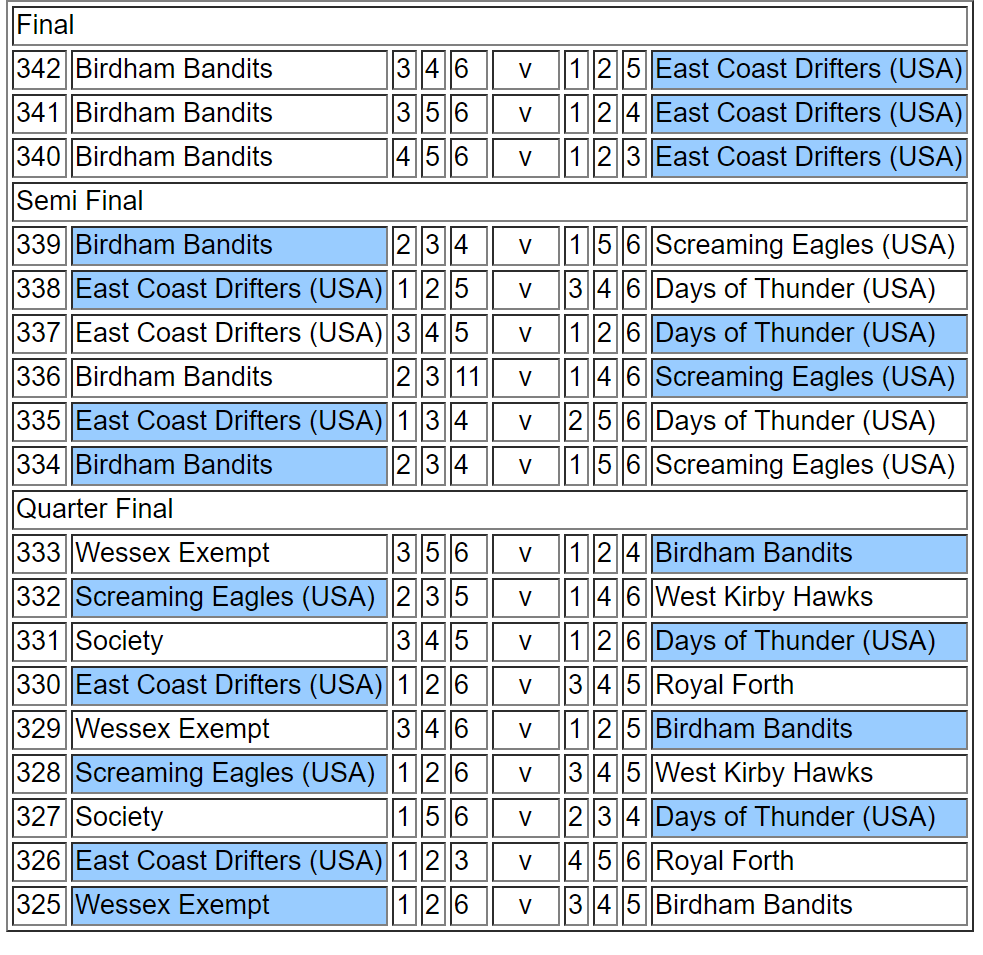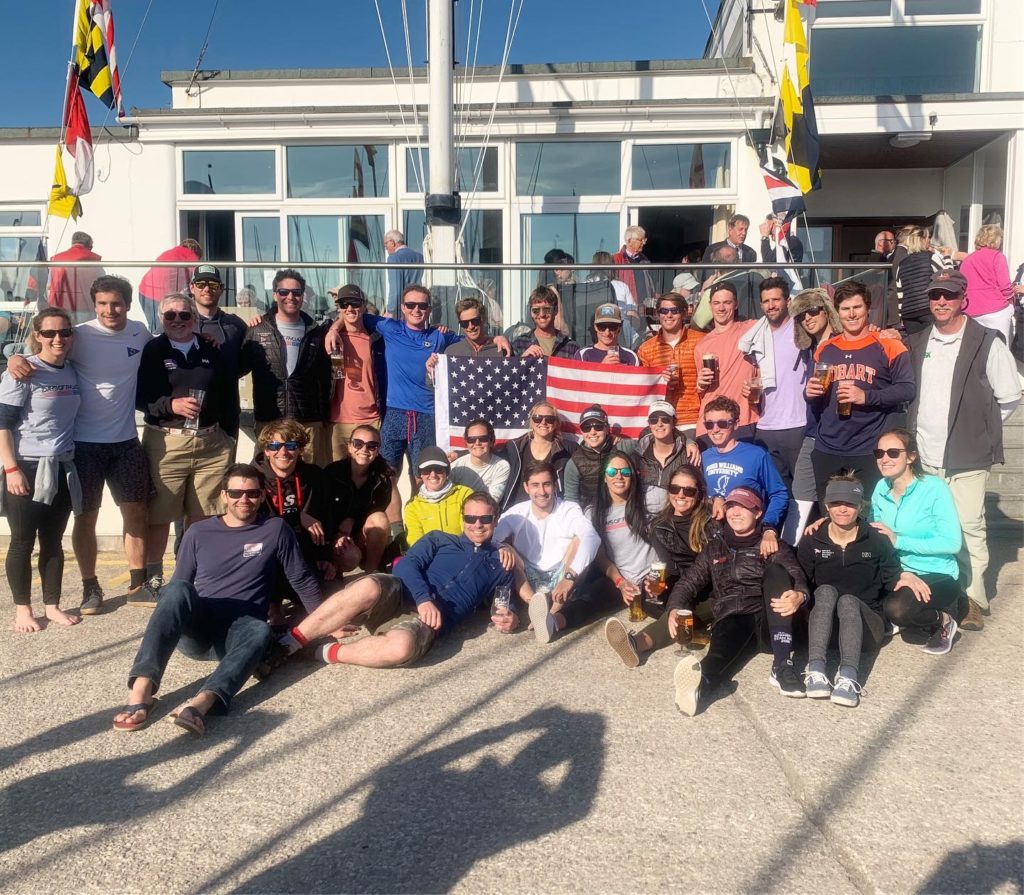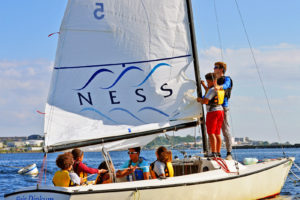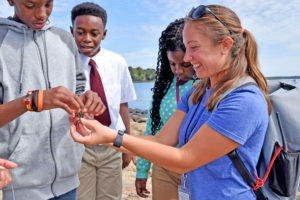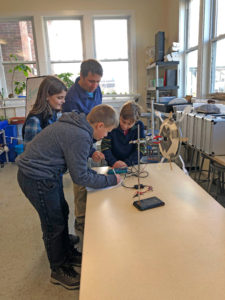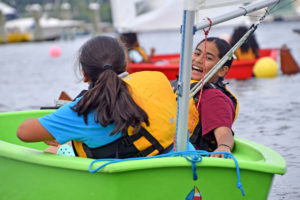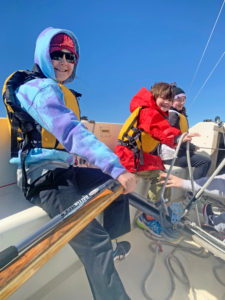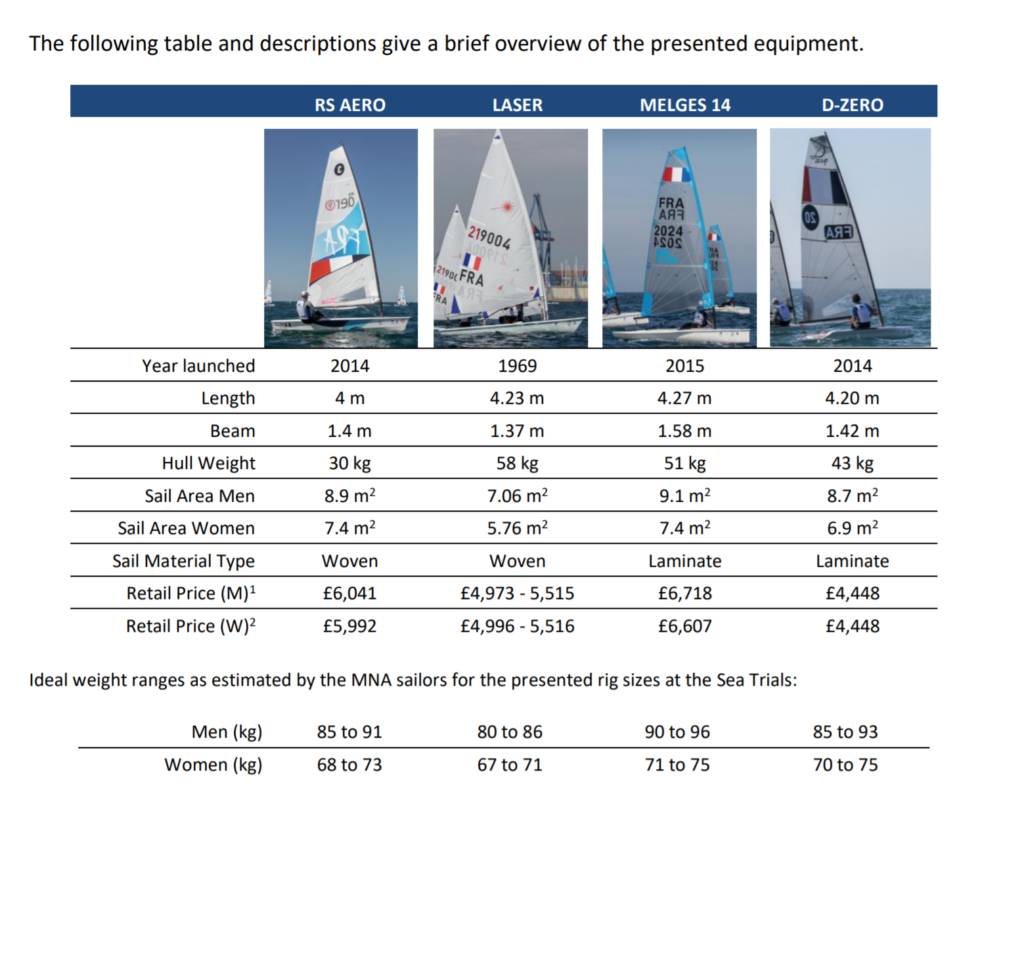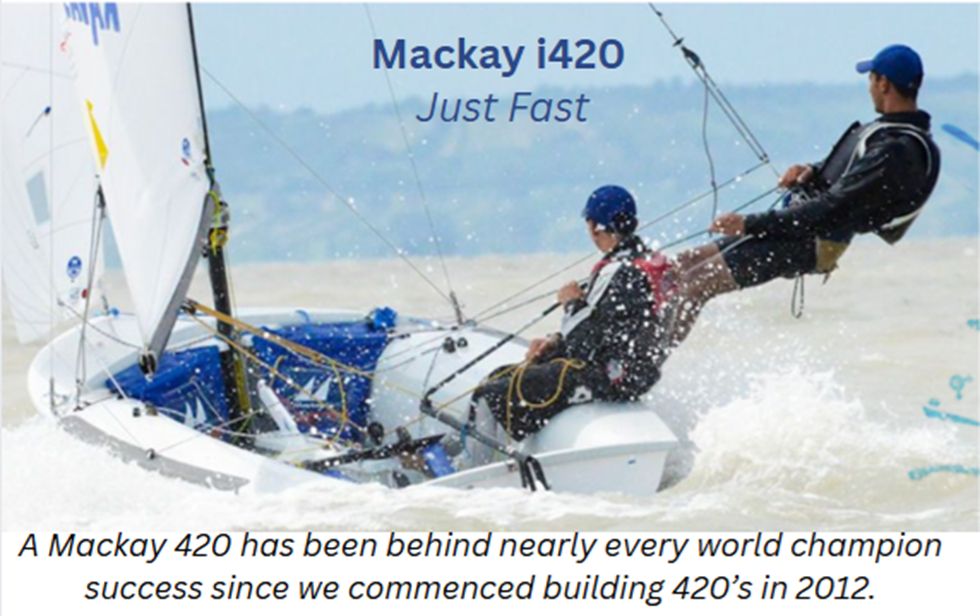|
Blog
2019 ICSA Quantum Female Sailor of Year: Ragna Agerup
Editor’s Note: It was very gratifying to review this article for publishing, as it made me recall the origins of this award. Way back in 2002, I owned “Quantum Sails Northeast” in Maine, and was running that business while coaching college sailing at Bowdoin. My loft was heavily invested in dinghy sails, and wanted to support college sailing, so I brought up the idea of a women’s college sailor of the year award to the partners of Quantum Sail Design Group. After some discussion, QSDG agreed, and that very next spring, I was off to Detroit on a plane, with the new crystal trophy sitting in the empty seat next to me, to present to the very first winner, Corrie Clement of ODU, the very first “Quantum Female Sailor of the Year Award.” Since then, it’s become a staple of the ICSA award ceremony, and it’s great now, as I sit here working with Sail1Design, to read an Airwaves report on the award I remember helping bring to life. Pretty cool. -ts
|
2019 Wilson Trophy Team Race Championship Report & Results: The Americans Are Back!!
By Airwaves writer Pearson Potts
“Liverpool” is known by many as an elite soccer team who has had a historic run this year in the Champions League final against the Tottenham underdog. However, for us sailors who lack such athletic ability, it represents something else. Every year, just a few miles west of Liverpool, the small family town of West Kirby transforms into the epicenter of dinghy team racing. In England’s green and pleasant land, West Kirby sits on the southern side of the Irish Sea east of Wales’ northern coast. It is a normal quaint British town with the Guiness just as cold as its weather. 32 teams from across the globe including Australia, Austria, USA, Denmark and many others huddle in what locals call the ‘theatre of dreams’ for the annual Wilson Trophy.
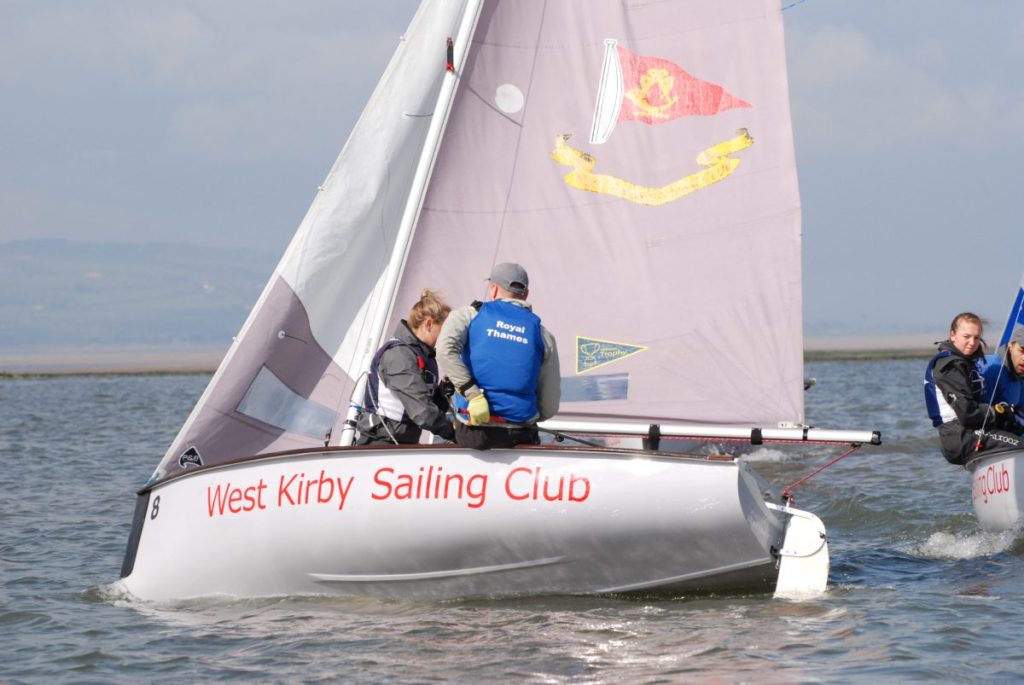
butcher closed down and the race commentator rang louder than the town’s church bells. The racing authority at West Kirby are punctual in typical English fashion. Warning signals were listed in the sailing instructions to begin at 7:57 AM to begin the first race promptly at 8 AM. If you watch NASCAR solely for the crashes, then the second day of the event was for you. Winds gusted to 25 knots and mark 3 of the digital N course turned into a demolition derby. After a few busted hulls and swimming sailors, the RC decided to switch to the comically small storm sails for their fun-sized boat. However, the American teams stayed strong.
The USA was represented by 5 teams consisting of both veterans and youthful spirits all with the Wilson trophy in their cross-hairs. College sailors of the year, All-Americans, Olympians, match racing champions and team racing world champions spearheaded the American effort, but it was a handful of recent college graduates that edged out everyone else to climb to the number one spot. 3 out of 4 teams in the semifinals were American which put British American relations at its lowest point in a decade. In the finals, it was the East Coast Drifters, the young, recent graduates of Mackenzie Bryan and Martim Anderson alongside Hobart free agent Greiner Hobbes, along with crews Marina Cano, Miranda Brooks, and Mike McBrien, who took on the Birdham Bandits and Britain’s last hope of victory. However, the finals mimicked the 3 years of the War of 1812, with 3 short blowout victories all ending in a 1-2 combination for the Americans. It was the first time an American team won the Wilson trophy since 2011. The college coaches team of Amanda Callahan, Clinton Hayes, David Johnson and Ben Greenfield have been close as runner-ups in 2016 and 2018, but it was some of their very own prodigies that got the job done.
Dinghy team racing teeters as a lost art in the U.S. However, there are a few dedicated sailors and coaches that seek to keep the tradition alive. US Sailing has appointed a few regattas such as the Charles River Open Team Race as qualifying events for the U.S. Hinman Team Racing Championship. Nevertheless, dinghy team racing is in desperate need of a replacement boat for the Vanguard 15 that accepts a wide range of individuals of all shapes, sizes and ages. You won’t be able to find too many 35 year old, 40-hour work week cubicle warriors able to keep up with the studly recent college graduates. Yet, US participation in the Wilson Trophy has grown in recent years, possibly indicating that dinghy team racing is back on the rise.
Sailing Club Profile: New England Science and Sailing
New England Science & Sailing Foundation (NESS) is an ocean adventure nonprofit that provides STEM-based education programs, on and off the water, for students from all walks of life. NESS uses sailing, marine science, powerboating, and adventure sports as teaching platforms. They engage everyone in experiential learning that builds confidence, teamwork, and leadership skills vital to their futures.
Over the past twenty years NESS has come a long way from its beginnings and stands out as unique place for many different types of learning. This learning is centered around their four core values. As of 2018, they’ve taught over 9,000 students!
- Inclusiveness- Opening doors for on-the-water learning for all students regardless of ability or financial need
- Experiential Learning- Actively engages students through inquiry-based learning by doing, seeing, and feeling first hand
- Personal Growth- Taking students out of their comfort zones for personal discovery and empowerment
- Stewardship- Building connections between students, their communities, and a sustainable natural environment
What was the vision the founder Spike had for starting the program?
NESS was founded on the core value of being inclusive. Spike wanted to get people from the community out on the water sailing. At its start, NESS was part of the Stonington Harbor Yacht Club. As NESS expanded, we separated from the yacht club and started using sailing, marine science, adventure sports, and powerboating as platforms.
What was the size and scale of the programs when it first started and how many staff members are currently involved?
When we first started in 2002, we had 14 children sailing in nine dilapidated Optimists purchased from the Ida Lewis Yacht Club. At that time, we had two seasonal instructors. Now NESS has 26 full-time staff supplemented with 15 AmeriCorps members and during the summer we add another 30 seasonal staff.
Before the science was added in 2008, what types of programs were being offered at the organization? Where did the idea for involving science come from?
Marine science was added in 2008 to reflect the fact that not all students wanted to sail. In fact, the opportunity to take a marine science program in the morning and sailing in the afternoon gave students a wonderful full day experience. We were one of the very early adopters teaching STEM (Science, technology, engineering, math) on our water-based platforms. Now we align our school offerings to the Next Generation Science Standards (NGSS) supporting curriculum in schools. It’s important to know that our science program really encompasses all aspects of sailing. We are very pleased to be the only program in the region that is teaching on high-performance sport boats and foiling sailboats. Science is critical in high performance sailing.
How has the addition to science changed the organization?
Science has never really been a standalone aspect of NESS’s curriculum. Not only is sailing a great way to build lifelong skills such as teamwork, confidence, and leadership, but is also an educational experience. NESS educators use US Sailing’s REACH curriculum to guide our own sailing adventure programs. REACH is a curriculum that helps teach STEM (science, technology, engineering, and math) principles through the unique platform of sailing. It is associated with National Education Standards (NES) in science and math, which is a second set of curriculum standards that NESS educators use to create quality programming. Research has even shown that REACH curriculum has helped participants increase their STEM based knowledge by 13%! We can teach students about STEM principles such as wind, buoyancy, sail area and perimeter, simple machines, and more in just one field trip!
As students learn about how weather impacts sailing through wind and waves, they discover the physics of wind lift and learn about how parts of the boat such as the sail, keel, and movement of sailboats use wind to function. Geometry is effortlessly incorporated into sailing!
In short, we have always taught science on the water, whether that is through sailing, kayaking, powerboating, paddle boarding, or marine science.
How does NESS reach out to students and schools?
In terms of schools, about 80% of our programs come from a combination of referrals from other teachers and general word of mouth. Other ways we reach out is through emails, phone calls, and mailings. Many teachers and organization directors look through our website and get an idea about our programs from our Education Program Guide. From there we can further coordinate aligning their curriculum to our programs with guidance from one of our NESS educators.
A large number of students at the organization attend the program with the help of financial aid, how important are donations to NESS for this?
Donations provide a critical 70% of our operating budget and help make NESS accessible to students from all walks of life. Additionally approximately 50% of our school students cannot afford the full tuition for our curriculum, so we rely heavily on fundraising to offer scholarships to enable them to attend.
What are some of the biggest changes has the organization gone through in the past few years?
Probably our biggest change was as we became accredited. As an organization, we spent 2018 undergoing a rigorous accreditation process with the New England Association of Schools and Colleges. In the fall of 2018, NESS was accredited by NEASC. NEASC, the oldest accreditation agency in the country, accredits educational institutions, like Harvard, Connecticut College as well as a vast array of independent schools. NESS is the first school partner program to be accredited in the country validating the quality of our curriculum and achieved outcomes. What started out as a small community sailing program in 2002 has now blossomed into a very relevant educational partner to schools and is making a real difference in students’ lives using the water as a learning platform.
The New England Association of Schools and Colleges said, “NESS makes a difference in the lives of the young people it nurtures—sometimes a life-changing difference and sometimes a simple moment of self-confidence gained. We had a distinct sense the people who make NESS what it is regard this opportunity as a genuine and rare privilege. Their commitment will continue to strengthen this exceptional program.”
Where does the organization see itself in the next few years?
Looking to the future NESS will dive deeper into our collaboration with schools both during the summer and the academic year. It is this partnership that allows us to not always support the curriculum but teach important life skills such as teamwork, communication, confidence, perseverance and self-control.
A special thanks to the NESS Associate Director of Communications Caroline Knowles for giving us the insights to the organization!
2019 Lightning Class Boat Grant Recipients Announced!
The International Lightning Class Association’s Boat Grant program begins its 13th season by announcing the 2019 grant recipients. We are proud to report that our two 2019 grant skippers are women!
Darby Reddaway and her team of Wheeler Sutton and Hannah Gersch are from Atlanta, GA and will be sailing with the Lake Lanier Fleet 348 in the Southeastern District. Reddaway and her teammates sail for the Georgia Tech Sailing Team and are “thrilled to join a class that is dedicating time and resources to sailors of our age. Besides, it will be nice to sail something bigger than a 420.” Their mentor will be longtime Lightning sailor Pam Burke.
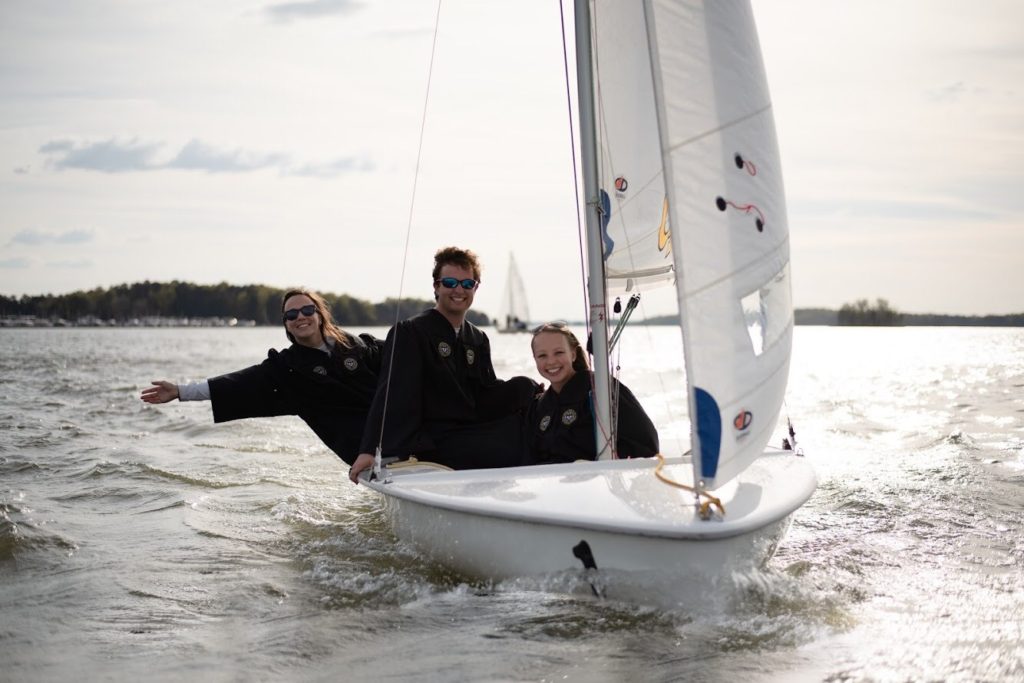
Christine Moloney and her crew of Sarah Warren and Christine’s cousin Grace Woodcock will be based out of Central NY and will sail with both the Central NY and Lake Erie Districts. Christine and Sarah sailed for Hobart and William Smith College. Christine is a longtime Lighting sailor with strong family ties to the Class and the Buffalo Canoe Club. With the 2019 North American Championships at the BCC, “I knew this would be the perfect year to get a team together” explains Moloney. “This is a great opportunity to sail with my college teammate again and introduce her to a great class.” Their mentor will be veteran Lightning Sailor Jed Dodge.
Boat Grant Program Co-Chair, Matthew Schon said that “2019 was one of our most talented application pools to date.” It is great to see this level of interest from these young adults in a Class that has been around for 80+ years. The Boat Grant Program is committed to getting this 20-something demographic into the competitive Lightning Class. We hope to get all applicants into the Class at some level by year end and encourage those that were not awarded a boat to re-apply for next year.
We welcome Darby and Christine and their teams to the Lightning Class! We are excited to have them sailing with us!
RS Sailing Sends World Sailing an Open Letter: What will the Next Olympic Boat Be??
Earlier this year in March, World Sailing held a competition/evaluation between four final contenders, Laser, Melges 14, RS Aero, and D-Zero, for selection as the next single-handed dinghy in the 2024 Olympics. Currently, the Laser is the boat of choice, but that might all change when the final decision is announced soon. The evaluation results favored the RS Aero, and the sailing world is collectively holding its breath as we wait to see what will happen. RS Sailing just sent out an open letter, printed below. What do you think should happen? For the full World Sailing evaluation results, CLICK HERE.
Dear Mr President and all,
In the coming days World Sailing will make decisions that are likely to affect our sport for the next couple of decades and we feel it appropriate to share our views.
Over the last twenty‐five years we have created RS Sailing and built it into the world’s leading small sailboat brand. We have changed the face of small boat sailing in many parts of the globe, we have made friends on every continent and shared beers in many sailing clubs. We are proud of RS Sailing’s achievements, made not by a few people but by many sailors who believe our sport can be better. We have not got everything right, but we have listened to the sailors and done our best to create boats and events that are right for the future of our sport. That is why we’re now the brand leader.
We always knew the decision regarding the Olympic single‐hander would be highly charged and the odds are stacked in favour of the incumbent. But the coming decisions are not just about the Olympians; this universal sector drives the youth pathways and the opportunity to build women’s participation as well. The sport is currently in decline in many regions and we all share the primary responsibility to reverse that trend.
The Evaluation was clear. Detractors will always find details to argue but the fact remains the people involved were unanimous in their view that the RS Aero offers clearly the best opportunity – for the youths, women and Olympians.
The boat is ultra‐light, dynamic and better suited to working with a range of rig sizes for light to heavy sailors. It uses high tech construction for competitive longevity. It is backed by the RS organisation, seen as the most capable of delivering consistent high quality to the world through our existing infrastructure and an international FRAND production network on every continent.
Look what happened to cycling when the equipment became light and sexy – the sport exploded.
Conversely, the current Equipment design is fifty years old and heavy. Whatever the rigs, the hull is heavier than many of the sailors it seeks to
serve… Lift your bike, ride your bike and think about it…
The issues between the various organisations that build and manage the current Equipment are well documented and long running. They make life harder for many sailors and organisers. Recent communications make it clear that solutions have not been agreed. The issues and potential for litigation against all parties involved distract from growing our sport and threaten World Sailing’s reputation – indeed sailing’s reputation within the Olympic movement.
So, over to you World Sailing. The experts you selected have told you that the RS Aero is the best Equipment for the future of sailing and we have proved ourselves credible partners. The current Equipment was second ranked, even without factoring in ongoing commercial issues.
You can select new Equipment; you can simply ignore the information laid out by the experts and make no change; or you can take some time to consider what is best for the direction of our sport. A smooth transition is possible – perhaps starting with the women’s fleet or the youth pathway.
We offer you a chance to inspire the next generation.
We offer the RS Aero.
